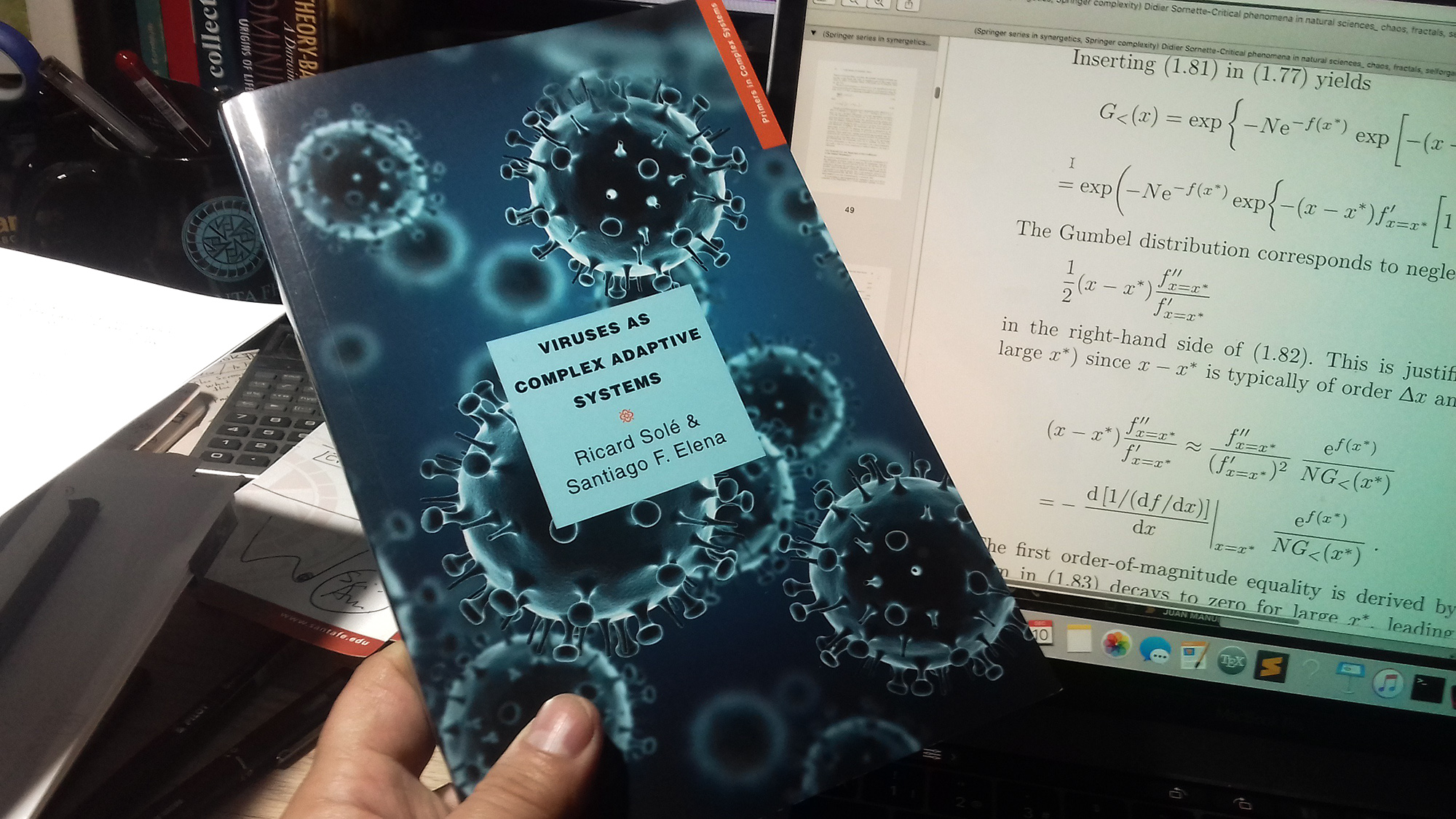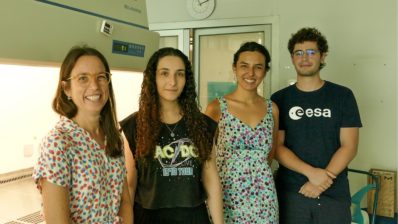Viruses seem very simple … but, as the famous SARS-Cov-2 reminds us, understanding them can be challenging. In fact, as researchers Ricard Solé and Santiago Elena tell us in their book “Viruses as Complex Adaptive Systems“, viruses are complex systems, describable in mathematical and physical terms.
Indeed, in this book published in 2019 and written in the first person, these two scientists – both associate professors of the Santa Fe Institute – review these systems, starting with the million dollar question: are viruses living beings?
The book, which is located at the intersection of modeling, biology and physics, is organized in different themes:
- What is a virus
- Virus evolution
- Co-evolution virus-host
- Epidemies
- Emergent viruses
- Virus origin and how they have diversified
- Comparison between a replicative system like viruses and computer viruses, cancer, language and ideas.
What is a virus?
According to the classical definition, a virus is a “non-cellular infectious agent that can only multiply within other cells by parasitizing its metabolism machinery” – in other words, a cellular parasite. Another definition, purely descriptive, would be a small piece of genetic material placed inside an envelope that serves to protect it.
But the authors propose that the “virus” is not just that infectious particle, but would also include the host proteins that the virus hacks. In other words, it would be a somewhat more abstract entity.
Whatever the definition, what is clear is that viruses are much more diverse than any other organism on Earth, at the structure level, in size (from a few Aamstrongs to miniviruses, which are larger than bacteria), or even when it comes to their genetic material (there are DNA viruses, RNA viruses …).
Viruses are much more diverse than any other organism on Earth, at the structure level, in size or when it comes to their genetic material.
Viral evolution
These days where the news are totally dominated by the new coronavirus, understanding how viruses evolve is more relevant than ever.
The evolution of viruses depends on several factors:
- Mutation rate – that is, how likely is the enzyme that copies the virus genetic material to get it wrong. These ‘mistakes’ most of the time have a negative effect (the so-called deleterious mutations), but sometimes they can have a positive effect (beneficial mutations) and help the virus to develop characteristics that can make it more resistant, more contagious, etc.
-
Generation time – that is, how long it takes the virus to complete its infection cycle: creating its proteins, mounting its capsid (i.e. its cover), creating new particles, etc. Depending on the type of virus and host, between 10 to 1,000 new viruses can form per infected cell in a matter of minutes or hours. And that’s only in a cell! Considering that there are millions of potentially infected cells in a body, that means billions of viruses in one person, created in a very short time. This gives them great adaptability, making it easier for them to find an evolutionary answer for each treatment. That’s why we need a new flu vaccine every year!
Viruses are therefore very varied, and very variable… And understanding this genetic variability is essential to understand their epidemiology and transmission.
Viruses are capable of creating billions of copies in no time. This gives them a great capacity for evolutionary adaptation.
Beyond viruses
Returning to the book, the authors take the opportunity to reflect on various topics, from the definition of life to how these tiny but complex particles have inspired other fields related to the spread of information – from cancer to computer viruses. They also wonder the possible role of viruses in the great leaps in evolution, such as the appearance of language or consciousness.
The book also reflects on the possible role of viruses in the great leaps of evolution, such as the appearance of language or consciousness.
In short, this is a must-read book for anyone dedicated to biology, physics, or mathematics and interested in complex systems – as are the authors. As Ricard Solé, a researcher at the Institute for Evolutionary Biology (IBE: CSIC-UPF), says: “I am a theorist. I am fascinated by evolution, unsolved problems and innovation: how new structures, new functionalities or new ways of propagating information arise… ”. This book offers hours of reflection on all these topics, and much more.







